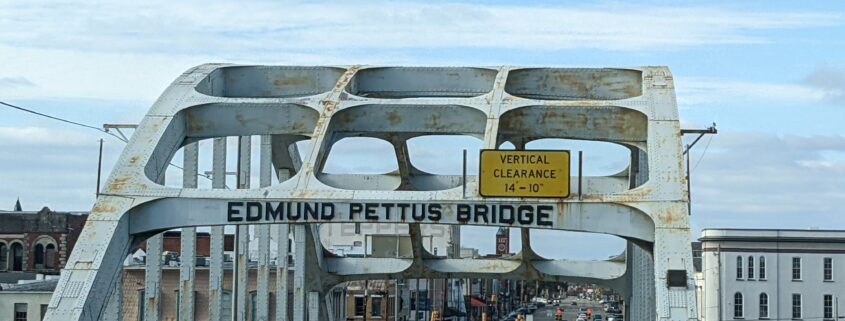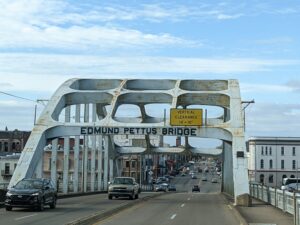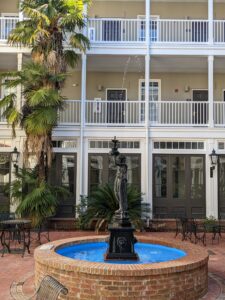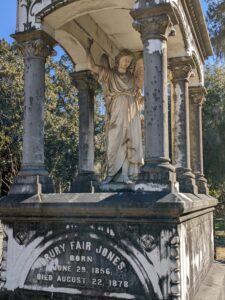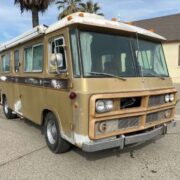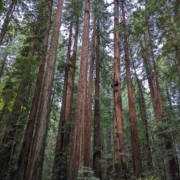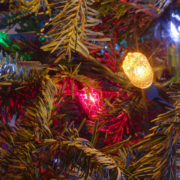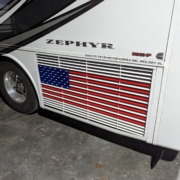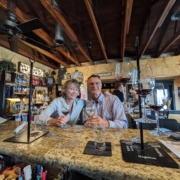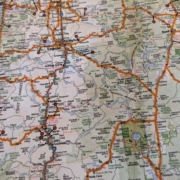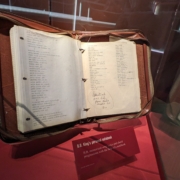Selma
By the time you read this, I’ll be back from round two of our adventures in our new-to-us motorhome.
I’ve cranked out five blog posts in the course of a day, all the while wrapping up details for a presentation and making sure I have materials for a book festival at the end of the adventures. I like to leave our townhome clean for when I return, a place of peace after our travels. So, laundry was done, sheets were washed, vacuumed and dusted, cleaned out the refrigerator, and tried to wait as late in the day as possible to pack, so as not to freak out our Labrador, Luna.
All the while, I’ve been wanting to get to this last post in reflecting our initial set of travels.
Selma. Selma. Selma.
All-day long thoughts of this experience have been haunting me, making sure I got to this point in my reflections.
Hell, Selma has been haunting me ever since we visited in mid-February.
We pulled into town around 3:30 pm, crossing over the infamous Edmund Pettus Bridge, and making our way to the Selma Interpretive Center. We were greeted by site manager Kenneth L. Williams, who when learning we were from Toledo, announced proudly that he was originally from Cleveland. I was curious as to what brought him down to Alabama, and he graciously shared that his momma had a house and some property in the area, and when she passed, he moved down to the area and loves it.
This short interaction was huge, given what we were about to witness. How times have changed, I thought, that a Black man from Cleveland would love living in Alabama.
Kenneth explained that although the bookstore was open, the exhibit area was not, due to Covid. However, the Lowndes Interpretative Center, 25 minutes away was open, but we had better hurry, he said, because it closed at 4:30.
After a quick stop at the historic St. James Hotel, a brief exchange with a local heading into the property, (“Come back to Selma! You could spend three days here!”) we ventured to Lowndes.
Even though I researched the facility, I’ve learned of poll taxes, literacy tests, the historic march, Bloody Sunday, and Turnaround Tuesday, I was not prepared for the emotional impact of reading the firsthand accounts of the march, of the beatings, of the hate.
I read about Tent City, a settlement on Black-owned property as a result of sharecroppers being kicked off their land because of their roles in voter registration demonstrations and activity. My heart hurt as I read the accounts of senseless violence that occurred there.
The thirty minutes we had was a drop in the bucket to what I would have liked to have spent there. As my husband offered to the volunteer at the front desk, “She likes to read everything.” I guess it’s the nonfiction writer in me. I’ll never know when I’ll have the chance to go back again.
We closed down the place. I felt like I needed more.
So, Brad discovered Prairie Creek Campground, one of many that fall under the Army Corps of Engineers. The campground was just 15 minutes away, between Lowndes and Selma. We decided we both wanted to go back to Selma the next morning.
The campground was the best experience we’d had so far on the trip. Large sites, peaceful surroundings, with woods and water, campfires, families making S’mores, reminiscent of yesteryear with the kids.
Although we didn’t have three days to spend in Selma, we had the morning. We crossed back over the Edmund Pettus Bridge and visited official and makeshift tributes to those instrumental in the Civil Rights movement and March. We poked our heads into the St. James Hotel. We ventured past the sad public housing projects and took pictures of grand historic homes. Our last stop was the Live Oak cemetery, with its beautiful, yet eerie live oaks throughout.
We left Selma feeling sad, yet hopeful.
Everyone should go to Selma. I’m not sure I could spend three days there.
One was enough to remind me of how far we’ve come, but how far we have to go.

